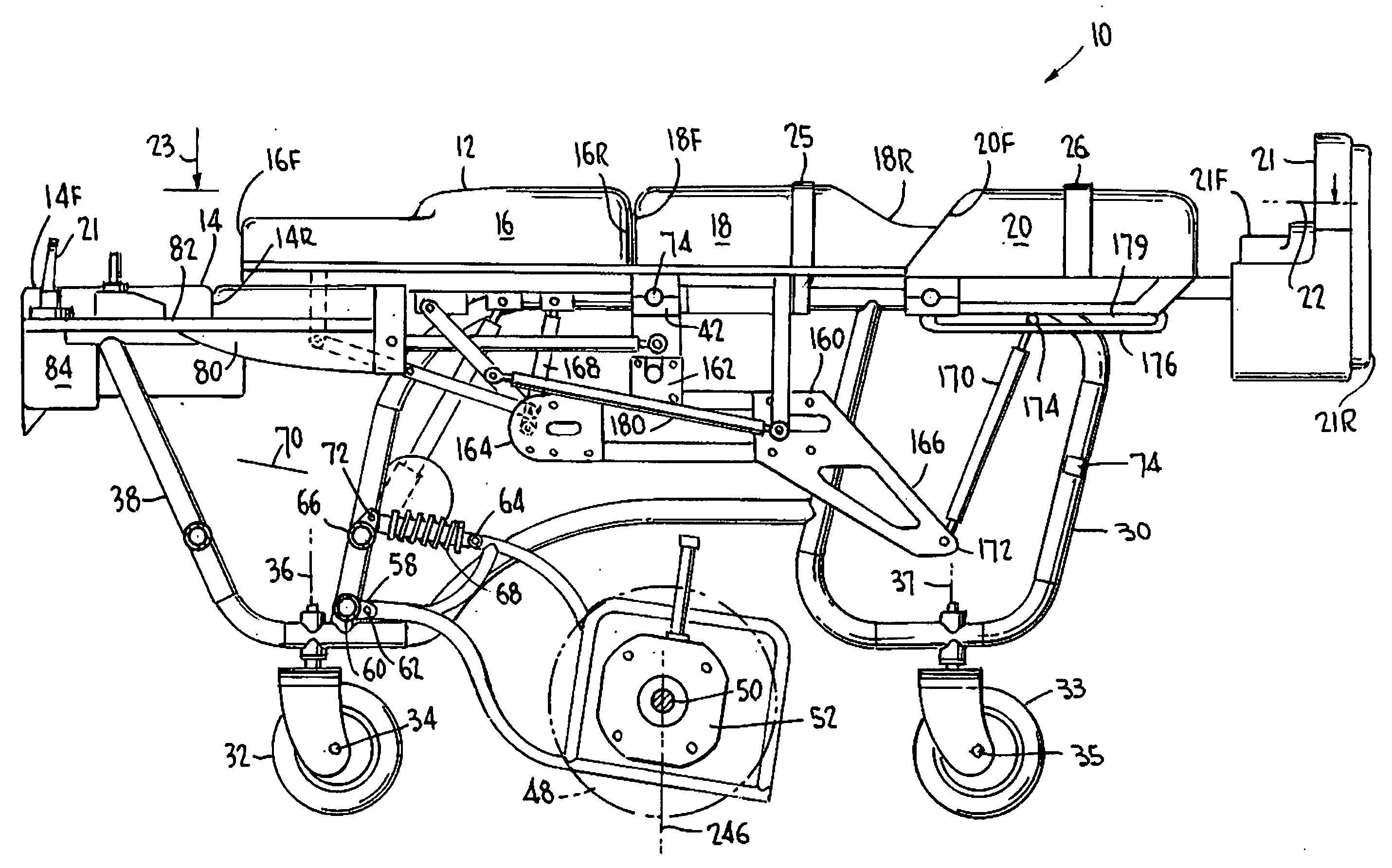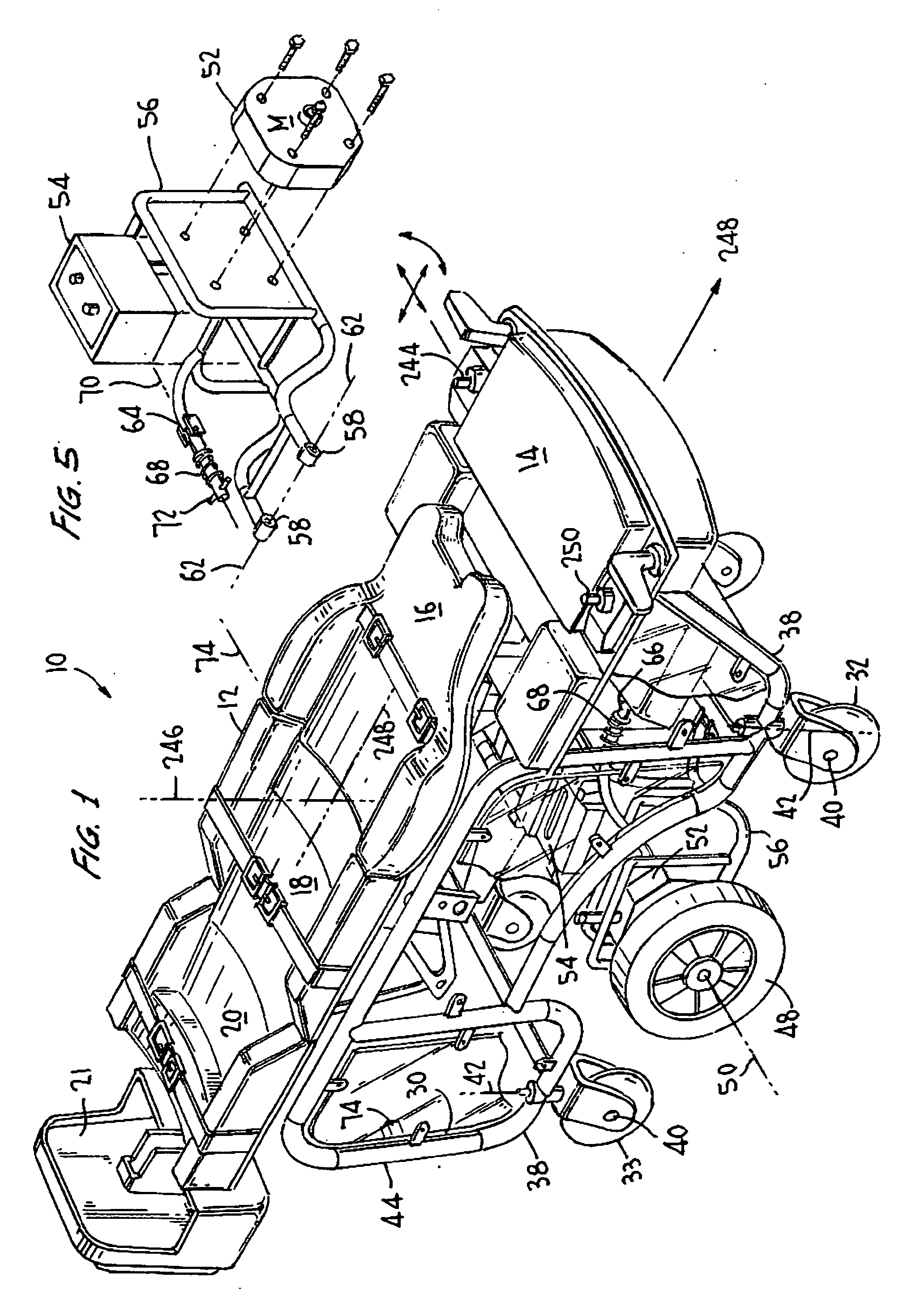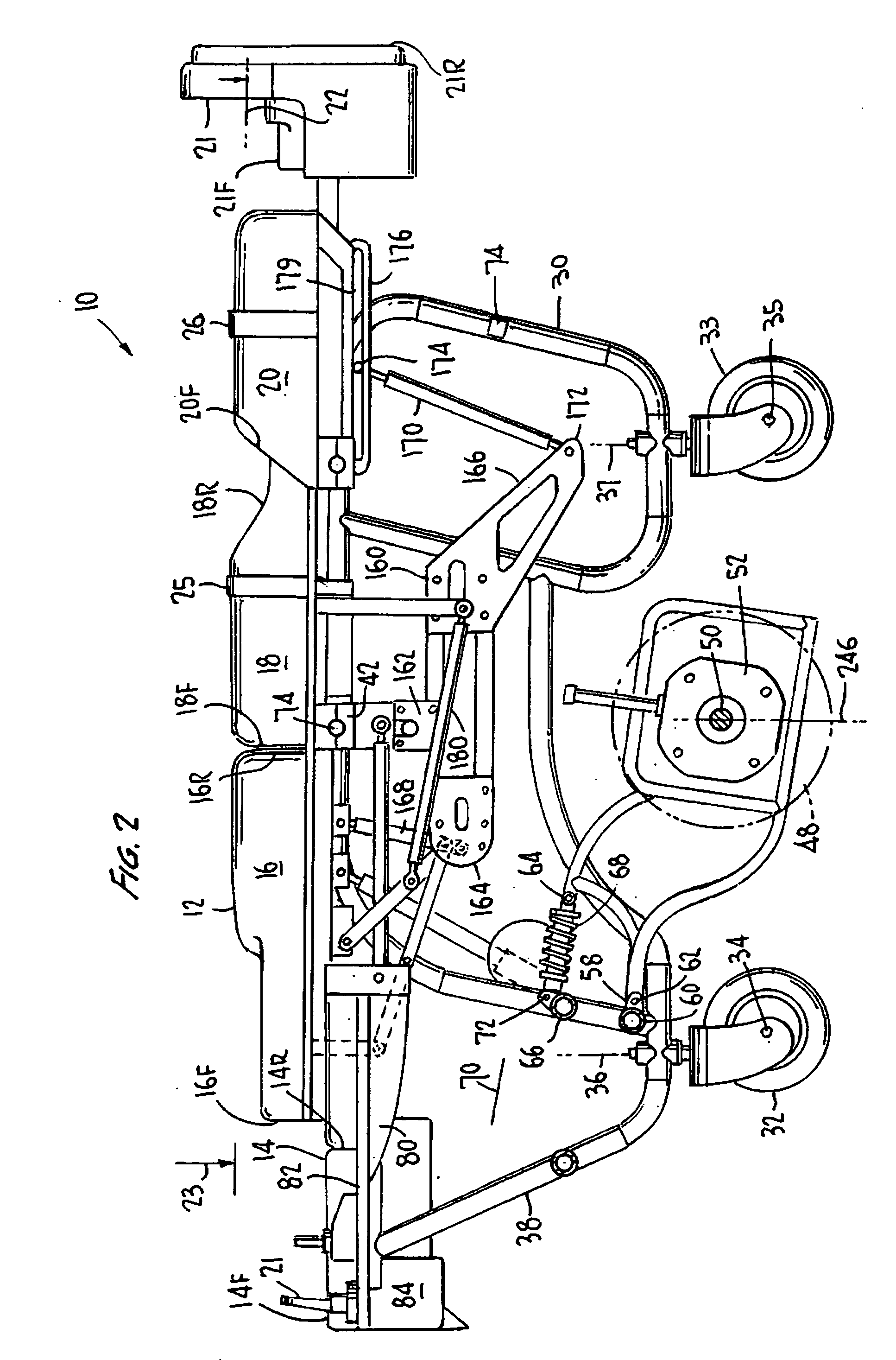Folding frame motorized prone cart
a technology of prone carts and folding frames, which is applied in the field of folding motorized prone carts, can solve the problems of insufficient tilting of the one-piece body support, discomfort and fatigue, and difficult maneuverability of prone carts, and achieves the effects of reducing fatigue and discomfort, avoiding neck strain, and being easy to maneuver
- Summary
- Abstract
- Description
- Claims
- Application Information
AI Technical Summary
Benefits of technology
Problems solved by technology
Method used
Image
Examples
Embodiment Construction
[0033]FIGS. 1-3 generally illustrate an exemplary embodiment of a prone cart 10 for supporting a patient on an body support 12 which has several moveable or articuable sections including a tray section 14, a chest support section 16, an abdominal support section 18 and a leg support section 20 with an attached foot support 21 extending therefrom. The sections of the body support may be selectively positioned in order to allow the patient to be supported in various prone positions between a lower or fully horizontal prone position 22 (FIG. 2) to an elevated or raised position 23 (FIG. 3.)
[0034]The tray support section 14 has a front end 14F and a rear end 14R; the chest support section 16 has a front end 16F pivotally connected to the rear end 14R of the tray section 14 and a rear end 16R. The abdominal support section 18 has a front-end 18F pivotally connected to the rear end 16R of the chest support and a rear end 18R. Leg support section 20 has a front-end 20F pivotally connected ...
PUM
 Login to View More
Login to View More Abstract
Description
Claims
Application Information
 Login to View More
Login to View More - R&D
- Intellectual Property
- Life Sciences
- Materials
- Tech Scout
- Unparalleled Data Quality
- Higher Quality Content
- 60% Fewer Hallucinations
Browse by: Latest US Patents, China's latest patents, Technical Efficacy Thesaurus, Application Domain, Technology Topic, Popular Technical Reports.
© 2025 PatSnap. All rights reserved.Legal|Privacy policy|Modern Slavery Act Transparency Statement|Sitemap|About US| Contact US: help@patsnap.com



